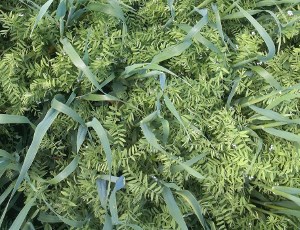Intercropping sugar beets

If intercropping is to break down the door in the world of sugar beets, a system that doesn’t result in yield losses is needed. Intercropping can help with controlling pest and weeds, and even in providing nutrients, but in a world that that been so successful in increasing yields, and so successful in controlling weeds (or, at least, understands the huge costs of weeds on yield), it will be hard to move away from a monoculture system if yields suffer.
So far, and notwithstanding the fact I haven’t actually done a proper literature search, I have not seen a lot of literature on intercropping in sugar beets at all. The evidence around around yield is mixed, but not highly promising. This is what I have found around the yield question:
- intercropping with wheat may induce increased early growth (a pot and hydroponic study).
- intercropping with the intercrop sown inter-row at BBCH 14 and mulched cost around 40% of the sugar beet yield. ‘Ambient’ weeds, Persian clover, white mustard, and spring barley were all included (field study over three years).
- Intercropping with lentils on raised beds in Pakistan cost only around 5% in yield, but promisingly returned a higher gross margin (field study over one year). Mustard and canola also returned positive gross margin changes, but cost closer to 10% in sugar beet yield.